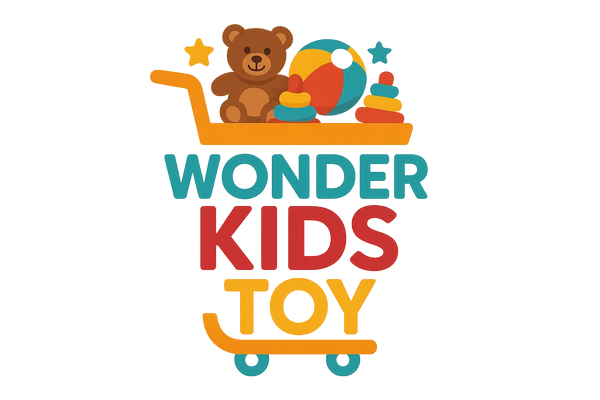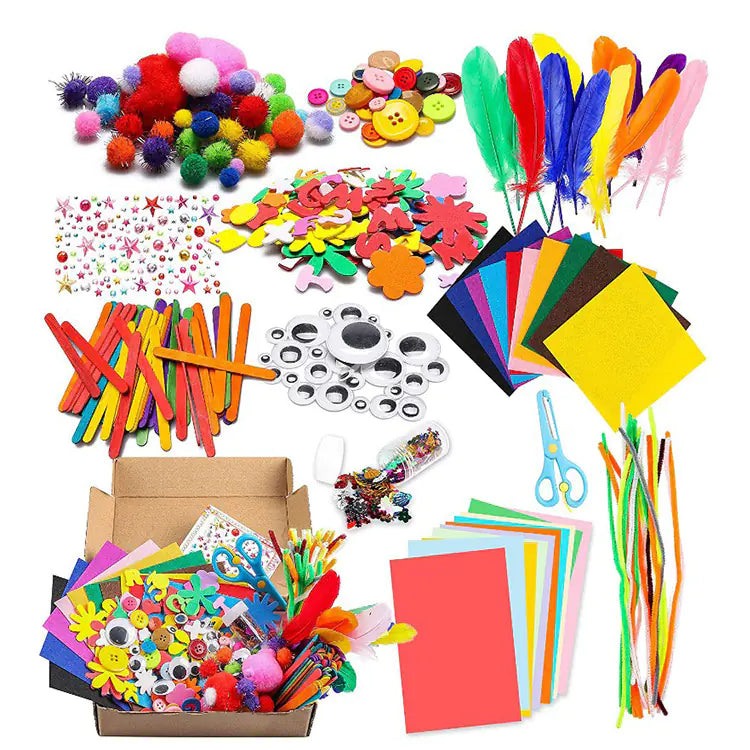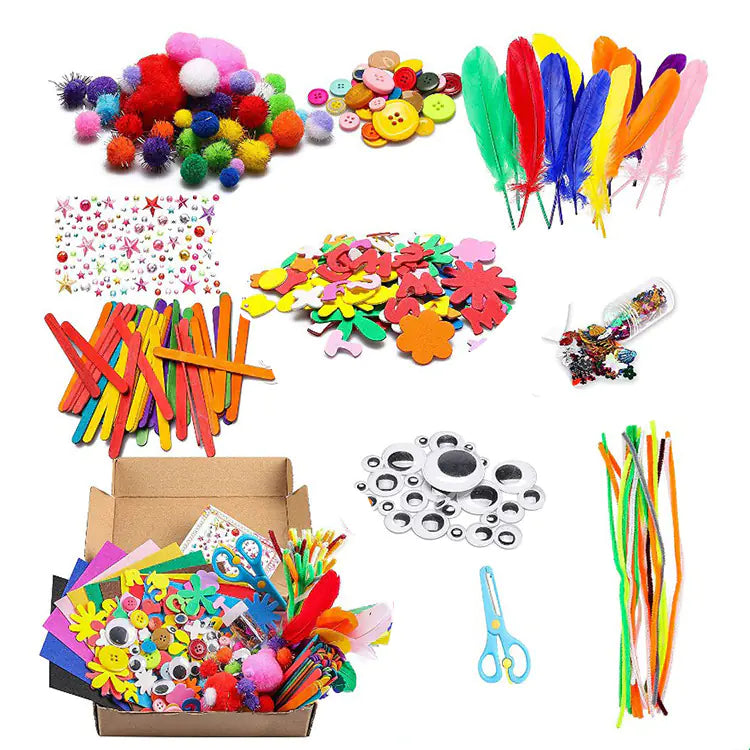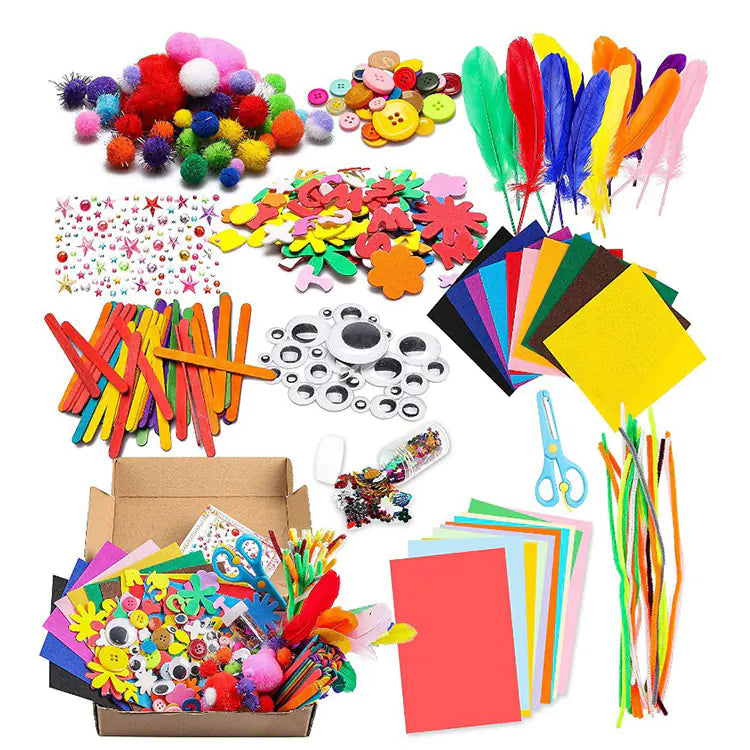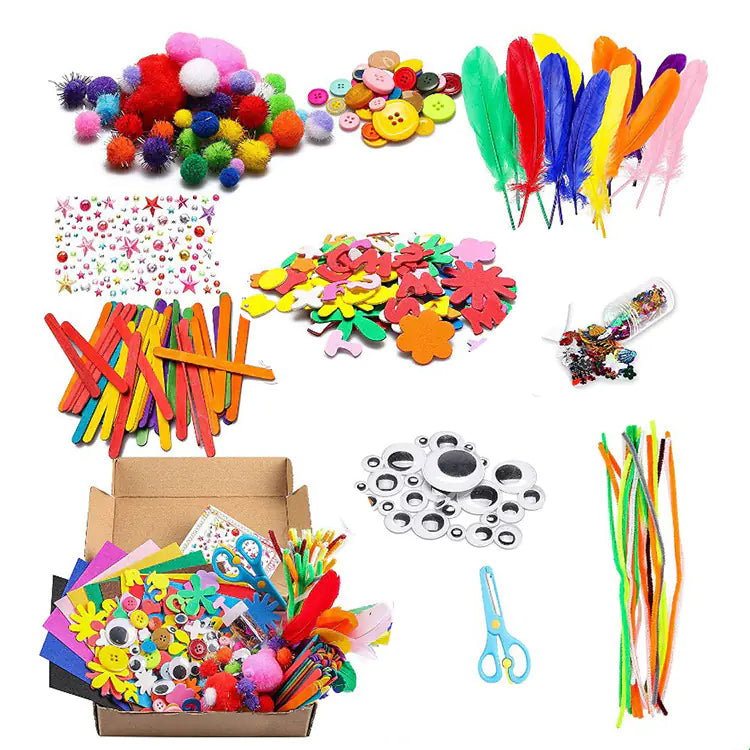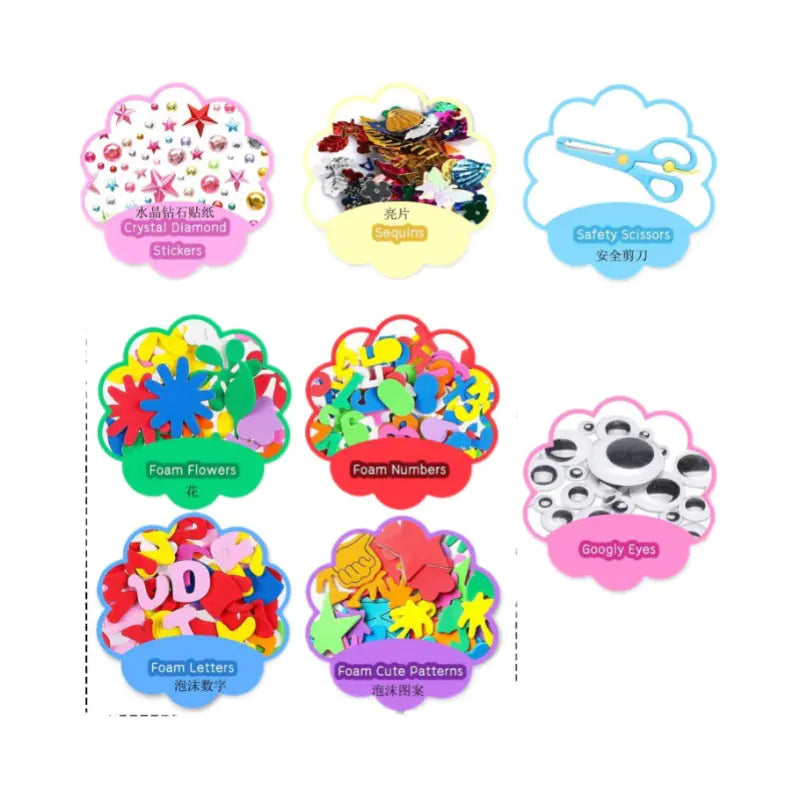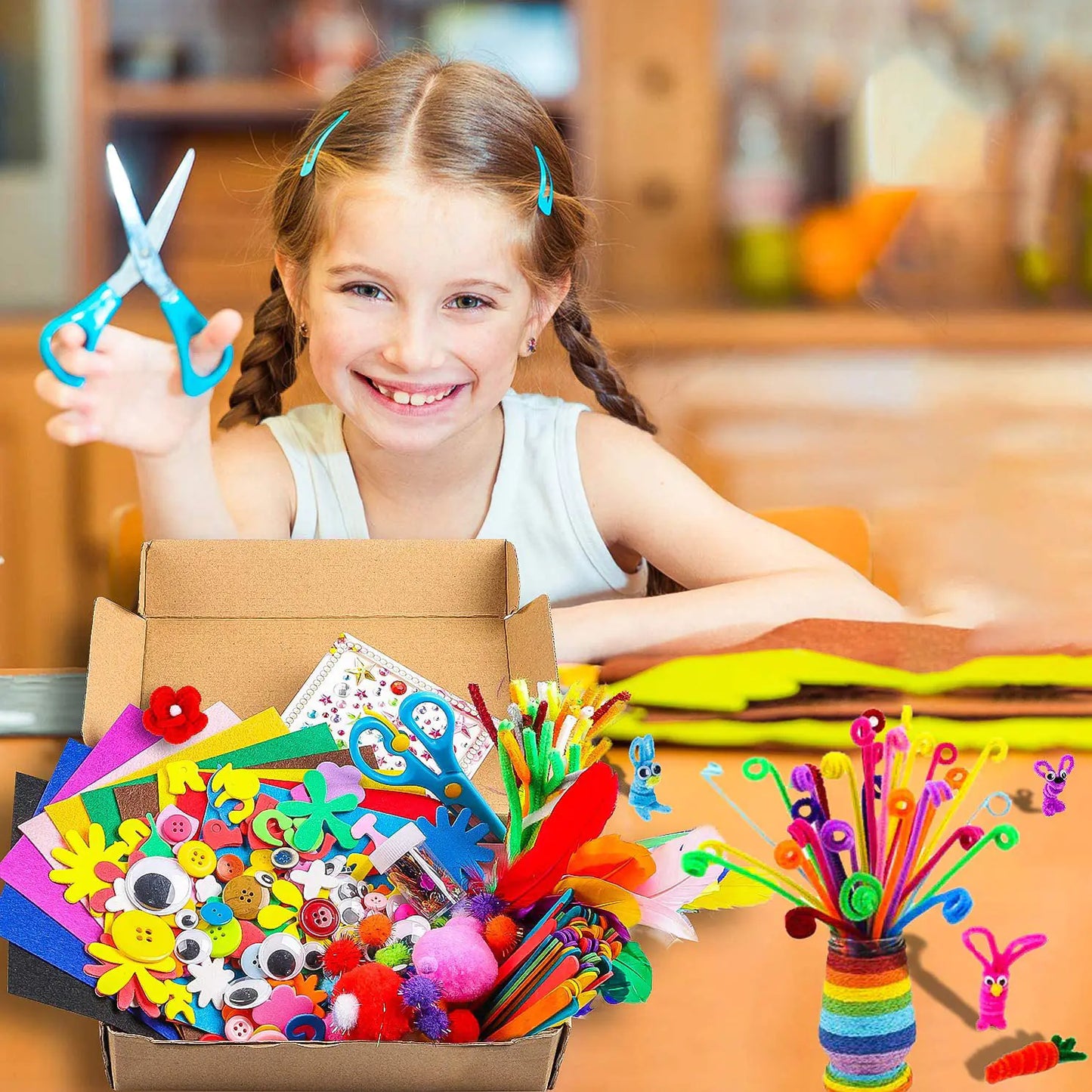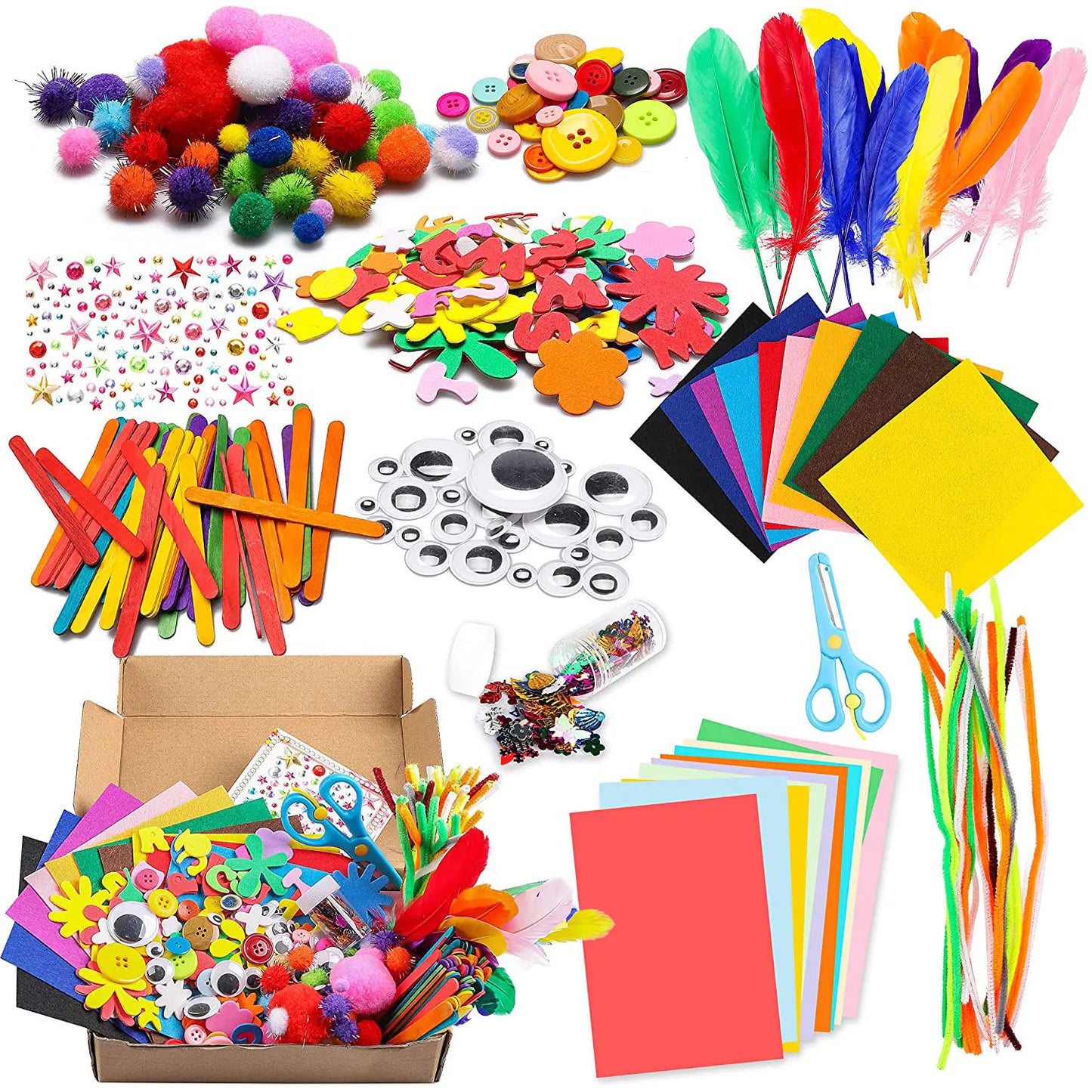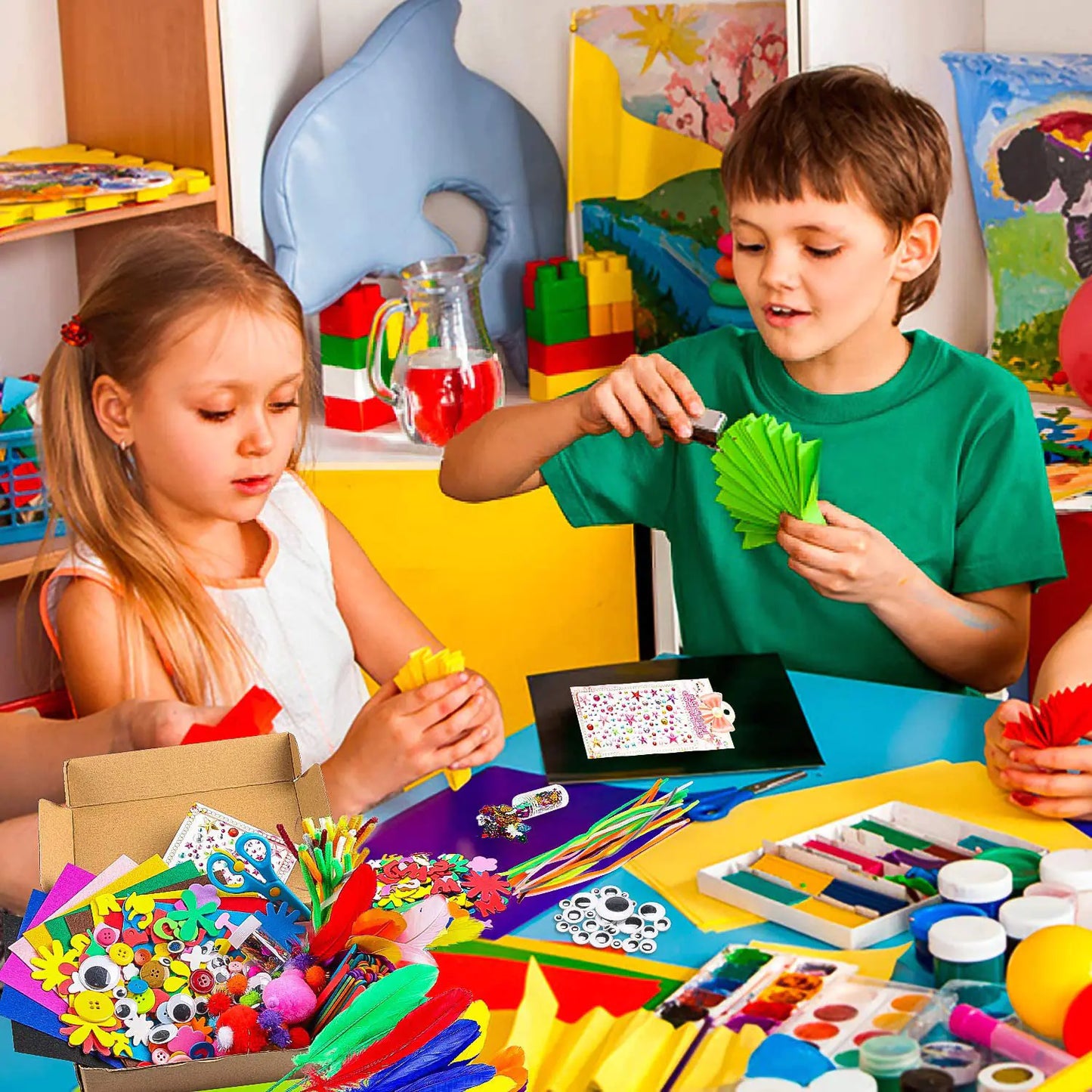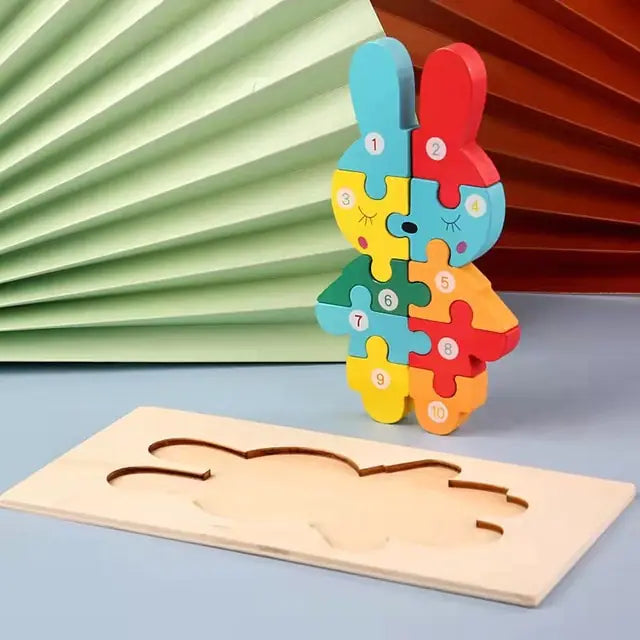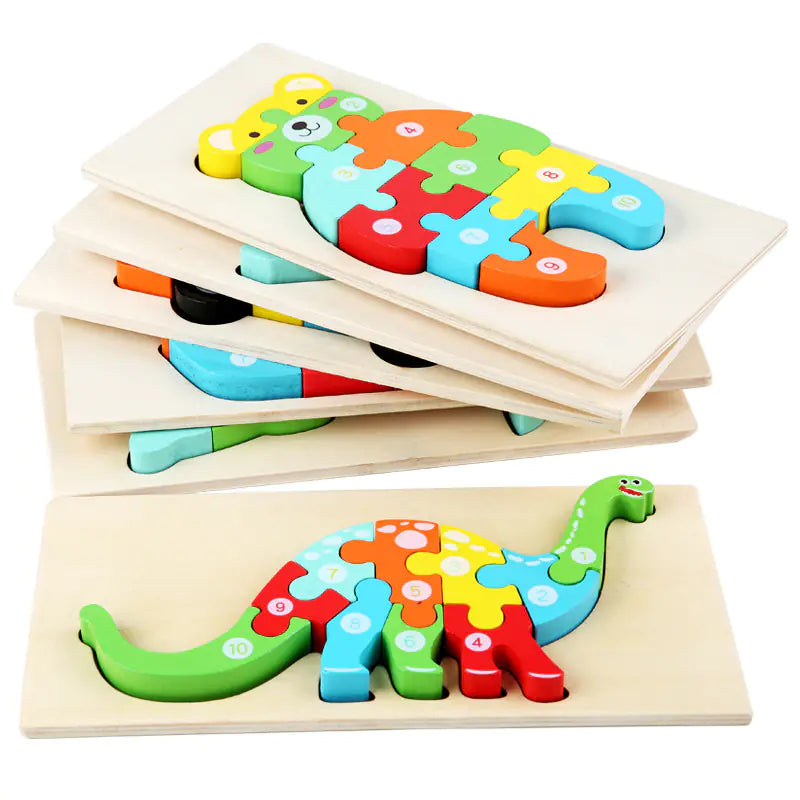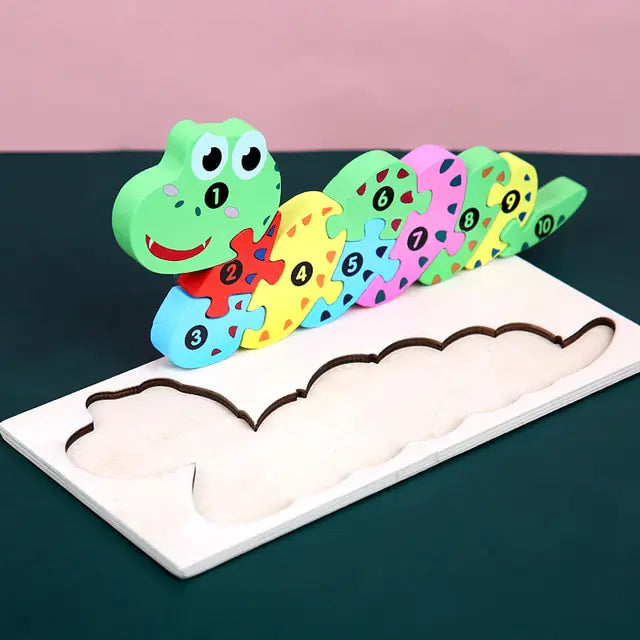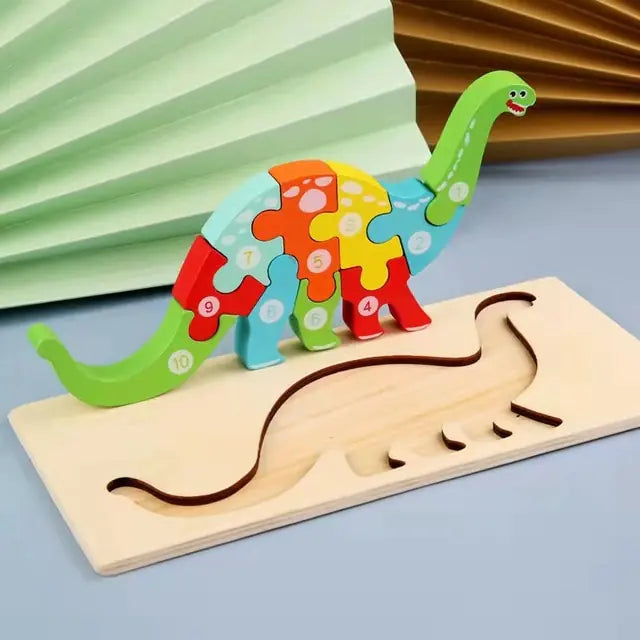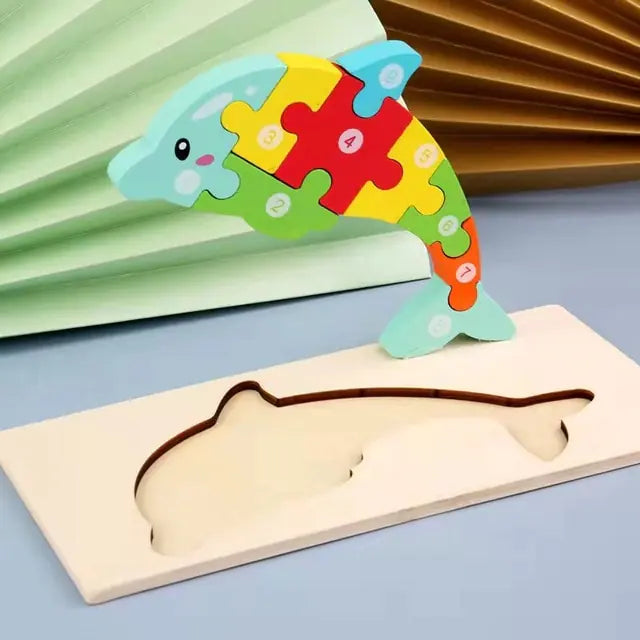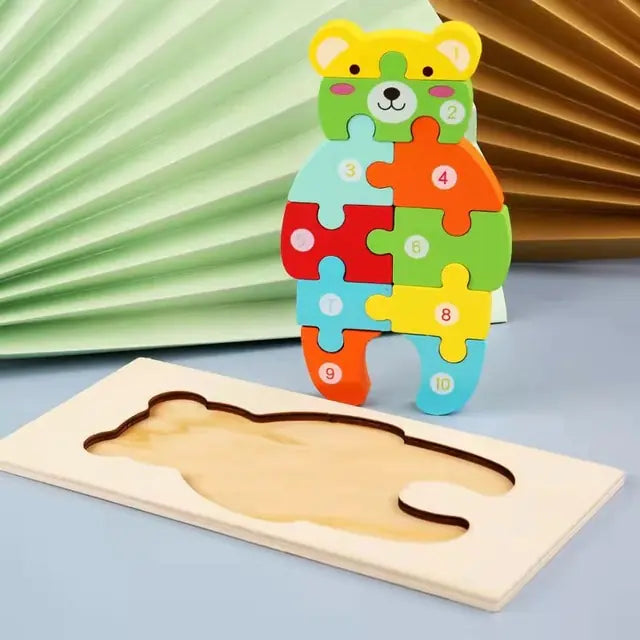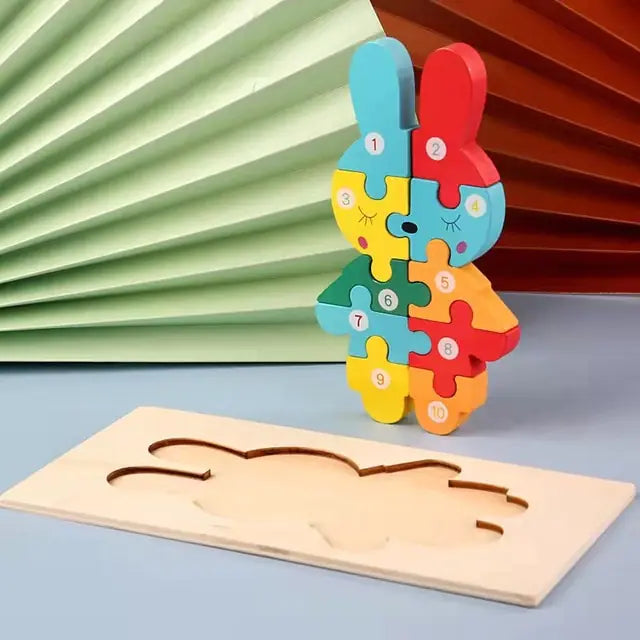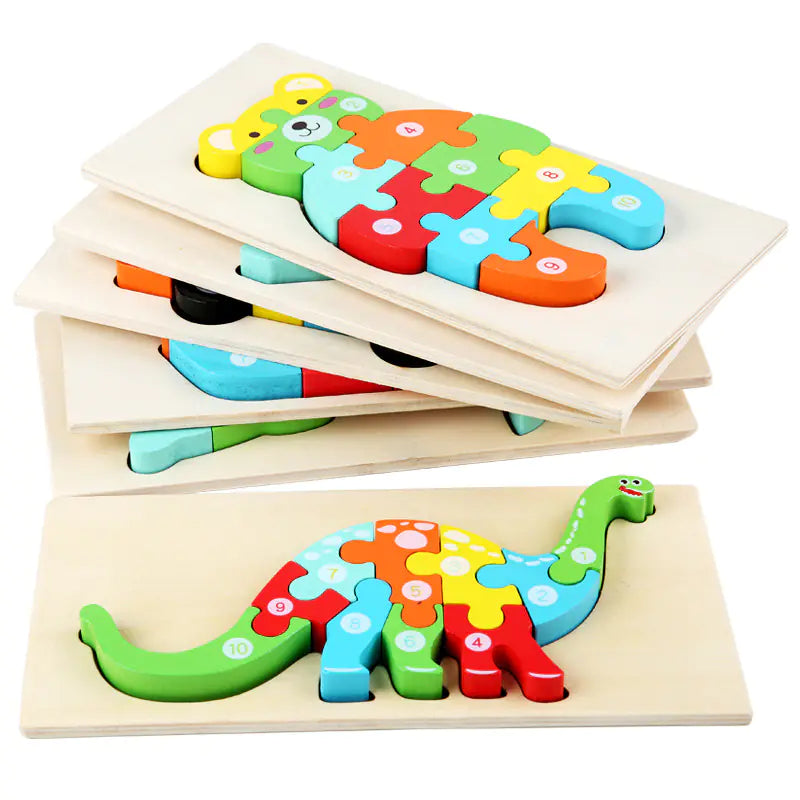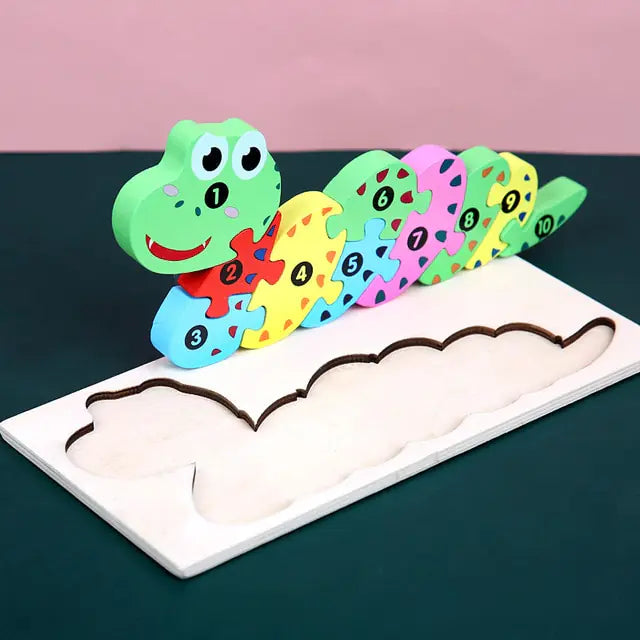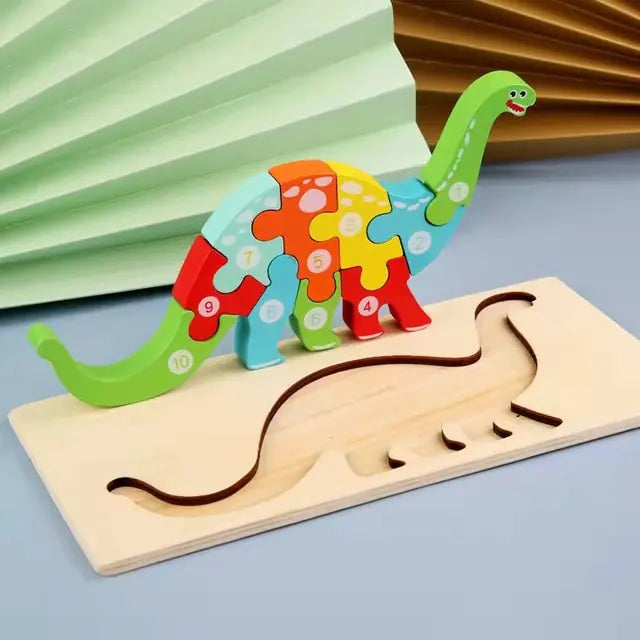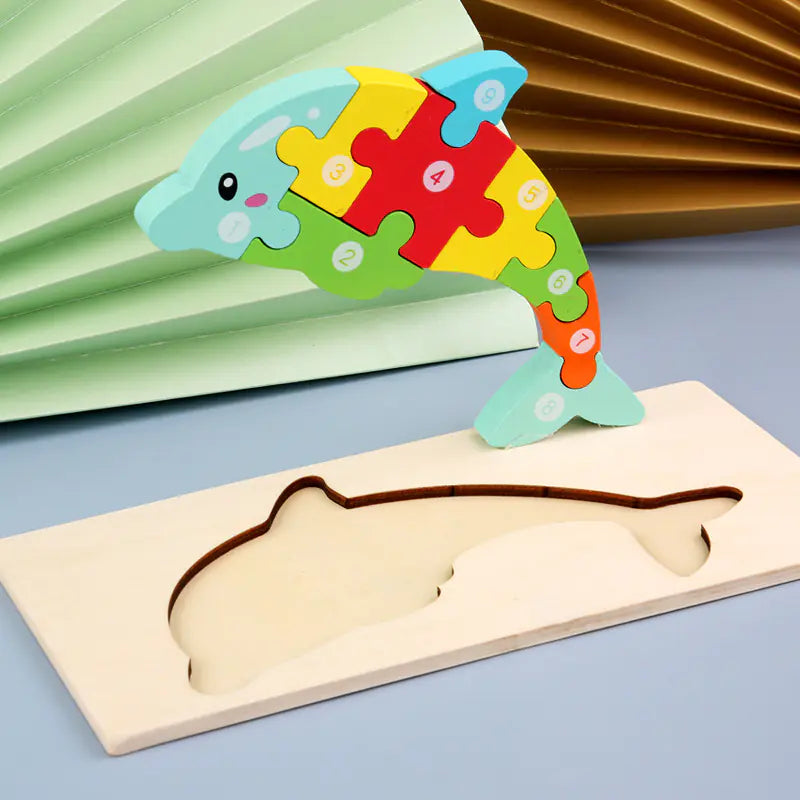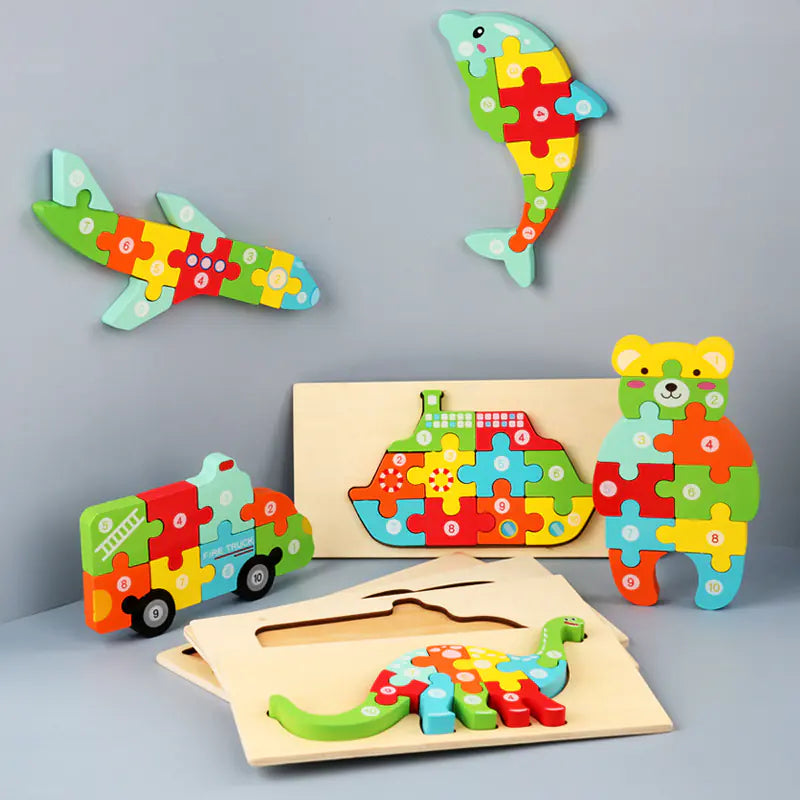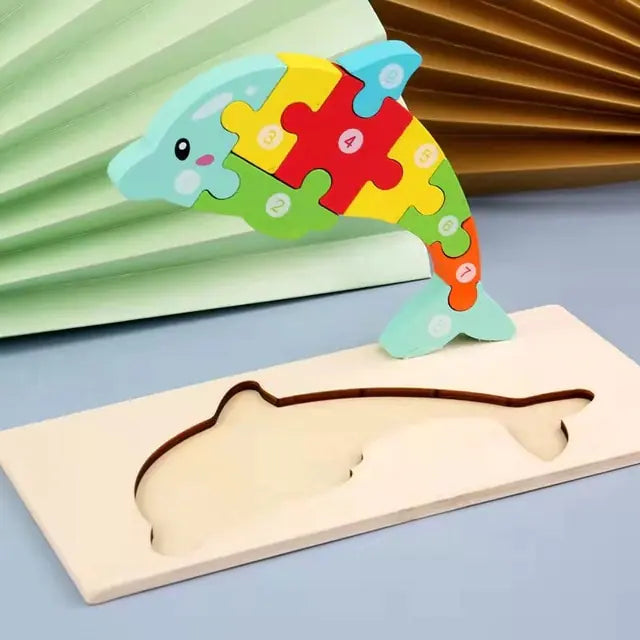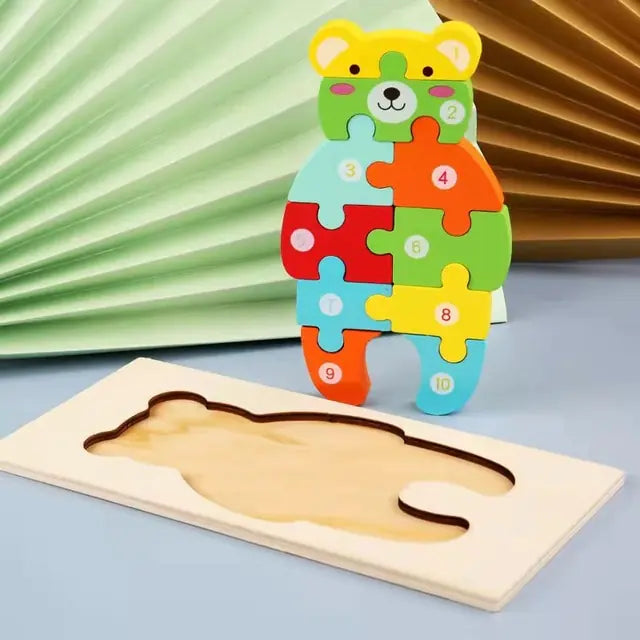Understanding your child's learning style is crucial to fostering their educational development. With their inherent appeal and interactive nature, toys can be powerful tools in identifying and catering to various learning styles. This article delves into the different learning styles and how specific toys can help reveal and support them. From kinesthetic learners who thrive on movement to auditory learners who respond to sound and visual learners who benefit from visual cues, we explore a range of educational toys that align with each learning style. Additionally, we discuss toys that suit children who learn best through social interaction or solitary reflection and those with a natural inclination towards language, logical thinking, nature, or technology.
Spotting the Signs of a Kinesthetic Learner

Why Movement Matters
As a parent, I've seen firsthand how kids are natural movers. They're always on the go, exploring the world with their hands and feet. Movement is not just a form of play; it's a key to learning. By engaging in physical activities, children can develop their motor skills and coordination and even enhance their cognitive abilities.
Toys that encourage movement can transform classrooms into vibrant hubs of creativity and collaboration through play-based learning. They encourage emotional growth, social skills, and creative expression. For instance, a simple ball can teach a child about gravity, force, and social interaction during a game of catch.
Movement-based learning isn't just about keeping kids active; it's about fostering an environment where they can learn through experience and play.
Let's not forget that children sit too much in school. Increased physical activity leads to deeper learning, high student engagement, fewer behavioral issues, and more successful outcomes. So, when choosing toys for your child, consider those that get them moving and grooving—it's an investment in their overall development.
Toys That Teach Through Touch
As a parent, I've seen firsthand how toys that engage a child's sense of touch can be incredibly effective for kinesthetic learners. These tactile toys are not just fun; they're a gateway to learning. For instance, sensory playsets for babies are designed to stimulate touch, sound, and vision, aiding in their cognitive development.
Educational toys that focus on touch help children understand the world through a hands-on approach. They can manipulate objects, feel different textures, and learn by doing. Here's a quick list of toys that can enhance your child's tactile learning experience:
- Textured blocks and shapes for sensory exploration
- Clay and dough for creative modeling
- Activity mats with various fabrics and built-in activities
Encouraging a love for learning through educational toys can set children on a path to lifelong curiosity and success.
Remember, the goal is to find toys that foster growth and development through tactile engagement. For example, the Mega Bloks stackable blocks allow for free play and are one of the best educational toys for kids, promoting creativity and fine motor skills.
Games That Get Kids Grooving
I've seen firsthand how games encouraging movement can be a game-changer for kinesthetic learners. These kids must wiggle, stretch, and jump to grasp new concepts. Dance mats and motion-controlled video games are perfect for this, as they combine learning with physical activity. For example, a dance mat that calls out colors or shapes requires kids to think and move simultaneously, reinforcing their learning through body movements.
Toys that promote physical activity not only support learning but also contribute to a healthy lifestyle. Here's a quick list of some of my top picks:
- Twister: A classic game that gets kids bending and balancing while identifying colors and correcting from the left.
- Hopscotch mats: These can be used indoors or outdoors to teach numbers and encourage active play.
- Active video games: Games requiring movement can improve coordination and get the heart pumping.
Encouraging a love for learning through educational toys can set children on a path to lifelong curiosity and success.
Remember, the goal is to make learning so fun that it doesn't feel like work. By choosing suitable toys, you're not just keeping your kids entertained; you're helping them develop a love for movement and learning that will serve them well throughout their lives.
Auditory Learners: Tuning into Sounds

The Power of Music and Rhythm
I've always believed that music is a universal language, capable of transcending barriers and touching our souls. For our little ones, rhythm and melodies are not just entertainment; they're a foundation for learning and development. Music and rhythm are essential in enhancing auditory skills and play a crucial role in the way kids process sounds and language.
Toys incorporating music, such as drums, xylophones, or electronic music boards, can be powerful tools. They help children understand patterns and sequences, which are critical for language development. Here's a quick list of benefits that musical toys offer:
- Encouragement of memory retention
- Development of fine motor skills
- Introduction to cultural diversity
- Foundation for mathematical concepts
By integrating music into playtime, we're not just giving our kids a way to have fun; we're opening doors to a world of cognitive growth and auditory development.
It's fascinating to see how a simple beat can teach a child about timing and coordination or how learning to play an instrument can improve their mathematical thinking. When counting beats or measuring scales, they also learn about numbers and proportions. And let's not forget the joy that comes from creating their tunes! It's a beautiful blend of learning and play that resonates with the rhythm of their growth.
Sound-Based Toys for Effective Learning
As a parent, I've seen firsthand how suitable toys can make all the difference in my child's learning journey. Sound-based toys, for instance, are a fantastic way to engage auditory learners. These toys range from simple instruments like tambourines and xylophones to high-tech gadgets that produce various sounds and rhythms.
By incorporating sound into play, we can enhance our children's auditory processing abilities and memory retention. It's not just about hearing the noise; it's about listening and understanding patterns and sequences.
Here's a quick list of some sound-based toys that can support your child's auditory learning:
- Rainmaker or rain stick toys that mimic the soothing sounds of rainfall
- Musical instrument sets for hands-on creation of melodies
- Talking books and interactive story devices that narrate tales with character voices
- Sound puzzles that reward correct placement with corresponding animal or vehicle noises
Remember, the goal is to find toys that resonate with your child's natural inclinations. For example, a toy like the Rainmaker 12-inch Rain stick can be a mesmerizing auditory experience for little ones. At the same time, interactive storytelling gadgets bring stories to life, making learning more dynamic and memorable.
Interactive Storytelling Gadgets
I've seen firsthand how interactive storytelling gadgets can captivate my little one's imagination. These devices are not just toys; they're gateways to vast worlds of adventure and learning. Take the Lunii - My Fabulous Storyteller, for example. It's a hit with kids for a reason. They get to craft their own audio adventures, entertaining them and boosting their creativity and language skills.
Another gem is the Storypod. It's an award-winning system that combines stories, music, and skill-building activities. It's like having a magical library at their fingertips, engaging kids with multisensory experiences that are both fun and educational.
- Lunii - My Fabulous Storyteller: Encourages creativity
- Storypod: Multisensory learning
These storytelling gadgets offer a unique blend of entertainment and education, making them a smart choice for auditory learners who thrive on sounds and spoken words.
Visual Learners: Seeing is Believing

The Impact of Colours and Shapes
I've always been fascinated by how colours and shapes can influence a child's learning experience. Color can energize, while it also helps with their learning by controlling emotions, productivity, and learning. It's incredible to see how a simple change in colour or form can turn a toy from just another object into a powerful educational tool. Familiarity with various colours is essential, and I incorporate this knowledge when choosing toys for my kids.
Toys that combine play and learning keep my little ones engaged and enhance their sensory development through visual stimulation. Light and shadow exploration and puzzles that challenge their cognitive skills are staples in our playroom. Here's a quick list of toys that have been a hit in our house:
- Colourful stacking rings
- Shape sorters
- Pattern blocks
- Magnetic tiles
Remember, the goal is to provide a playful learning environment that encourages visual exploration and problem-solving. These toys are not just about fun; they're a subtle way of preparing your child for the visual demands of the world around them.
Puzzles and Building Sets for Visual Minds
As a parent, I've seen firsthand how puzzles and building sets captivate my child's attention. Building blocks are timeless, sparking creativity and enhancing spatial awareness. Whether it's constructing a towering skyscraper or piecing together a colourful jigsaw, these toys are more than just playthings; they're tools for growth.
Puzzles are particularly beneficial, improving memory and problem-solving skills. They come in various forms, from simple shapes for toddlers to intricate 3D models for older kids. Each puzzle solved is a boost to their confidence and cognitive development.
Here's why I love these toys for my visual learners:
- They foster creativity and critical thinking.
- They improve fine motor skills and hand-eye coordination.
- They offer a tangible sense of accomplishment.
Educational toys like LEGO DUPLO, magnetic tiles, and wooden blocks provide engaging learning experiences beyond the basics. They're not just about keeping kids busy but about nurturing their innate talents and preparing them for a bright future.
Educational Toys with Visual Cues
I've always believed that engagement is critical in educational toys. It's about finding those unique toys that match your child's interests and grow with them. These toys should teach multiple skills and encourage interaction, so I'm a big fan of those with visual cues.
Visual cues in toys range from simple color-coded puzzles to complex building sets with intricate details. They help children understand spatial relationships and improve their visual discrimination skills. Here's a quick list of benefits these toys provide:
- Enhance visual processing abilities
- Boost memory retention through visual association
- Foster creativity and imagination
- Improve hand-eye coordination
When shopping for quality toys, always consider age labels and safety. It's not just about the bright colors or the number of pieces in a set; it's about how a toy can contribute to your child's development. And remember, the best toy is one that your child will want to come back to time and again, offering endless opportunities for learning and fun.
The Little Social Butterfly: Interpersonal Learning Toys

Board Games for Social Development
As a parent, I've seen firsthand how choosing suitable toys is crucial for kids' development, especially regarding social skills. Board games are more than just fun; they're a gateway to learning how to interact, share, and work as a team. Here's why I think they're a must-have in every playroom:
- They foster teamwork and cooperation among players.
- They teach patience as kids wait for their turn.
- They help develop communication skills during gameplay.
- They encourage problem-solving as a group, which is a crucial life skill.
Board games are not just toys; they are tools for learning and building connections.
Let's not forget the laughter and joy that come from a family game night. These moments help children learn the value of social interaction and the joy of playing together.
Role-Playing Kits for Empathy Building
I've seen firsthand how role-playing kits can work wonders for kids who are natural social butterflies. These kits allow children to step into someone else's shoes, literally and figuratively, fostering a sense of empathy and understanding that's crucial in today's world. Toys like Sphero Mini and role-play costumes enhance creativity and skills in kids, encouraging play-based learning for future innovators.
Italics aren't just for emphasis; they're a way to highlight the transformative power of these toys. When kids engage in role-playing, they're not just having fun—they're learning to navigate social nuances and develop emotional intelligence. Here's a quick list of benefits:
- Encourages cooperative play and teamwork
- Enhances communication skills
- Sparks imagination and creativity
- Teaches problem-solving in social contexts
Remember, the goal isn't to win; it's to experience and grow. Role-playing toys provide a safe space for kids to explore complex emotions and scenarios, building a foundation for empathy that will serve them well throughout their lives.
Collaborative Puzzles and Projects
I've always believed that playtime is not just about fun and games; it's a crucial part of learning to work with others. Collaborative puzzles and projects are a fantastic way to encourage this. They're not just toys but tools that help kids develop teamwork and communication skills. For instance, when kids work together to complete a puzzle, they learn to share ideas and solve problems as a group.
Puzzle Together is one such game that fosters group bonding and cooperative play. Seeing how a simple game can translate into considerable life skills like leadership and patience is incredible. And let's not forget their sense of achievement when they fit that last piece together!
Here's a quick list of benefits that collaborative toys bring to the table:
- Enhances social interaction
- Builds team spirit
- Encourages problem-solving
- Promotes leadership skills
Remember, the goal isn't just to finish the game but to build bridges between young minds.
Solo Stars: Toys for Intrapersonal Learners

Self-Reflective Journals and Diaries
One of the most powerful tools for my child's intrapersonal development is a self-reflective journal. It's a simple yet profound way for them to process their thoughts and feelings. Encouraging self-expression, these journals serve as a private space where my little ones can freely jot down their dreams, worries, and triumphs without fear of judgment.
Self-reflection is critical to personal growth, and I love how journals can guide my child in understanding their learning journey. They learn to evaluate their experiences, a stepping stone to developing strong analytical skills. Here's a quick list of benefits I've noticed:
- Fosters a habit of introspection
- Enhances writing and language skills
- Builds emotional intelligence
- Encourages goal setting and tracking progress
By regularly engaging with their journal, my child has become more mindful and self-aware. It's truly rewarding to see them articulate their inner world and grow from their reflections.
Building Independence with Solo Puzzles
I've always believed suitable toys can make a difference in a child's development. Solo puzzles are a prime example, offering a fun and engaging way for kids to learn independence. Puzzles challenge young minds, encouraging them to think for themselves and find solutions without relying on others. It's not just about the satisfaction of fitting the last piece; it's about the journey of getting there on their own.
Toy diversity is essential; rotating through different types of puzzles can keep the experience fresh and exciting. From simple shape sorters for toddlers to intricate 3D puzzles for older kids, there's a solo puzzle for every age and stage. Here's a quick list of benefits:
- Enhances problem-solving skills
- Boosts spatial reasoning
- Improves memory and concentration
- Fosters a sense of achievement
By guiding our kids without directing them, we allow them to explore, make mistakes, and learn from them. This is the essence of building independence.
Remember, the goal isn't to solve the puzzle for them but to provide the support they need to do it themselves. This approach builds cognitive skills and instills confidence and self-reliance in our little ones.
Mindfulness and Meditation Toys
As a parent, I've seen firsthand how suitable toys can foster a sense of calm and focus in my kids. Mindfulness and meditation toys are designed to do just that, helping children to center themselves and manage their emotions. It's not just about keeping them quiet; it's about teaching them the valuable skill of inner peace.
Educational toys are essential for children's development, and those encouraging mindfulness can be particularly impactful. From simple fidget toys that allow for quiet contemplation to more complex sets that guide them through meditation practices, these toys can be a gateway to improved concentration and emotional regulation.
- Simple fidget toys
- Guided meditation sets
- Yoga mats for kids
- Breathing exercise helpers
Encouraging a love for learning through educational toys can set children on a path to lifelong curiosity and success.
Remember, the goal isn't to silence your child's spirit but to give them the tools to calm the storm inside. By integrating mindfulness toys into their playtime, we're not just keeping them engaged but helping them build a foundation for a balanced and mindful future.
The Budding Linguist: Language-Based Learning Aids

Storytelling Tools and Books
As a parent, I've seen firsthand how storytelling can open up new worlds for children. Storytelling is a powerful tool that entertains and educates, helping kids develop their language skills and imagination. For the budding linguist in your family, consider these engaging storytelling tools and books that can significantly impact their learning journey.
- “The Story of the World” Series by Susan Wise Bauer immerses kids in various cultures and historical events through captivating tales.
- “The Magic Tree House” Series by Mary Pope Osborne takes children on time-traveling adventures, blending history and fantasy.
- “The Usborne Illustrated Stories from Around the World” introduces children to folktales and legends from different cultures.
Balancing screen time with hands-on play is crucial for children's growth and learning. Storytelling books provide a tactile experience that digital devices can't replicate, fostering a deeper connection to the material.
Montessori books and storytelling props can be particularly beneficial for six-year-olds, enhancing their language development and narrative skills. Encouraging your child to tell their stories can also boost their confidence and communication abilities. Remember, every child has a unique learning style, and storytelling might be the key to unlocking their potential.
Language Development Games
As a parent, I'm always on the lookout for toys that entertain and educate. Language development games are a treasure trove for enhancing your child's linguistic abilities. These games are designed to be fun and engaging while improving vocabulary, grammar, and communication skills.
For instance, I've seen my own kids' vocabulary expand through role-playing games where they mimic conversations and scenarios. Watching them learn new words and phrases in context is fascinating, and it sticks much better than rote memorization.
Language development games are not just about words; they're about bringing those words to life, giving kids the tools to express themselves with confidence.
Here's a quick list of language game categories that have worked wonders for us:
- Word matching games
- Storytelling board games
- Picture description challenges
- Rhyming and phonics games
Remember, the key is to choose age-appropriate toys for babies, toys supporting early language skills, and educational toys for toddlers that foster creativity and imagination. It's all about finding the right balance between learning and play.
Toys for Vocabulary Expansion
As a parent, I'm always looking for engaging educational toys that entertain and enrich my child's learning experience. Toys focusing on vocabulary expansion are a treasure trove for young minds eager to absorb new words and concepts. These toys come in various forms, from interactive electronic devices that pronounce and spell words to classic picture cards that pair words with images.
One of my favorites is the Montessori approach to language learning. It's all about hands-on experiences and interactive play. For instance, a set of beautifully crafted wooden letters can provide a tactile and visual way for kids to learn spelling and word formation. Here's a quick list of toys that I've found to be effective in expanding my child's vocabulary:
- Flashcards with vibrant illustrations
- Magnetic poetry kits
- Electronic spelling and reading games
- Story cubes for creative sentence formation
Encouraging a love for words and language at an early age can spark a lifelong passion for reading and learning. It's not just about memorizing vocabulary; it's about understanding the power of language and communication.
Remember, the key is to find toys that adapt to your child's needs and offer learning through play. Whether through a game that makes them laugh or a puzzle that challenges them, the goal is to make learning enjoyable and effective.
Little Logicians: Toys for Analytical Thinkers

STEM Kits for Problem Solving
I've seen firsthand how STEM kits spark a world of discovery for kids.
By engaging with STEM toys, children develop critical thinking skills, problem-solving abilities, and a deeper understanding of scientific principles.
It's not just about the toys, though. The real magic happens when I see the wheels turning in their heads as they piece together a robot or solve a coding puzzle. Educational toys like puzzles, building blocks, and board games enhance children's problem-solving, creativity, and critical thinking skills, preparing them for real-life challenges through play-based learning experiences.
Strategy Games for Critical Thinking
I've found that strategy games are a real game-changer for boosting my kid's critical thinking skills. These games require players to make decisions based on incomplete information, anticipate opponents' moves, and think several steps ahead. It's like a workout for the brain, with enormous benefits. Not only do they sharpen decision-making skills, but they also improve patience and long-term planning abilities.
Here's a quick list of some strategy games that have made a difference in our house:
- Chess: The classic game of strategy that teaches foresight and tactical thinking.
- Settlers of Catan: A resource management game that encourages strategic planning and negotiation.
- Ticket to Ride: A game that combines strategy and geography, perfect for young minds to explore.
Remember, the key is to find games that are not only fun but also provide a mental challenge. This way, your child can enjoy learning and developing their critical thinking skills without it feeling like a chore.
Math and Logic Puzzles
I've always believed that the best way to learn is by having fun, and that's precisely what math and logic puzzles offer. These puzzles are not just about numbers but about patterns, strategy, and problem-solving. They encourage critical thinking and can help kids develop emotional resilience as they tackle challenges head-on. Plus, they're a blast!
- Puzzles of varying difficulty levels
- Enhance problem-solving skills
- Improve memory and concentration
By integrating puzzles into playtime, we make math tangible and enjoyable for our kids. It's about turning learning into a game where every challenge is an opportunity for growth.
And let's not forget the great outdoors! We can use nature to teach math with toys that involve counting birds, leaves, or anything that captures our little ones' imagination. Making math fun and engaging through everyday activities is a win-win for everyone.
Nature's Apprentice: Outdoor Learning Toys

Gardening Kits for Hands-On Learning
I've found that one of the most engaging ways to introduce kids to the wonders of nature is through gardening. It's a hands-on experience that teaches them about the life cycle of plants and instills a sense of responsibility as they care for their growing seedlings. Gardening kits are perfect for this, as they often come with everything needed to start a small garden, from seeds to soil and pots.
- Encourages exploratory play
- Engages STEAM skills
- Sparks curiosity
Gardening is not just about planting seeds; it's a journey of discovery and learning that unfolds right before your child's eyes.
By nurturing their plants, kids learn valuable lessons about patience and the rewards of diligent care. Plus, gardening is a fantastic way to get them outside, away from screens, and into the fresh air. And let's not forget: gardening is a family activity that can bring everyone together, fostering a shared sense of accomplishment when those first sprouts push through the soil.
Exploring Science with Outdoor Toys
As a parent, I've seen firsthand how outdoor toys can turn the backyard into a little scientist's paradise. Outdoor science kits bring the wonders of the natural world right to our fingertips, sparking curiosity and a love for exploration. From gardening kits that teach about plant life cycles to weather stations that demystify the elements, these toys make science tangible and fun.
- Gardening Kits: Watch your child discover the joy of planting and nurturing their garden.
- Weather Stations: Kids can learn to predict the weather and understand meteorological concepts.
- Nature Observation: Binoculars and bug-catching kits encourage close-up examination of insects and birds.
By integrating play with education, we're not just keeping our kids entertained; we're opening their eyes to the intricacies of the world around them. And isn't that the best kind of learning? The kind that feels like an adventure.
Remember, the goal is to foster a deep interest in science that will grow with your child. So next time you consider a new toy, consider how it might feed their natural curiosity and love for learning.
Nature Observation Tools
As a parent, I've seen firsthand how nature observation tools can spark a child's curiosity about the world around them. Binoculars, field guides, and bug catchers provide hours of entertainment and teach valuable lessons about the environment and the importance of conservation.
By integrating outdoor and nature-based learning activities, we can balance tech with tactile play, fostering creativity and learning.
Here's a quick list of tools that can turn a simple backyard adventure into a full-blown exploration:
- Children's microscopes or telescopes for a closer look at the small wonders
- Nature exploration kits complete with magnifying glasses and binoculars
- Sketchbooks and watercolor paints for capturing the beauty of nature
Remember, the goal is to encourage imagination and physical activity, creating a holistic development experience for our kids. So next time you're considering a new toy, think about how it might get them grooving outdoors and learning through play.
Tech Whiz Kids: Digital Learning Tools

Educational Apps and Games
As a parent, I always seek ways to blend education with fun. That's where educational apps and games come into play. They're a game-changer for tech-savvy kids, turning screen time into a learning opportunity. One of my top picks is Duolingo, which makes mastering a new language feel like a breeze with its engaging lessons.
Encourages motor skills, social intelligence, and cognitive growth through educational play.
Balancing screen time with hands-on activities is crucial for holistic child development. Here's a quick list of benefits that these digital tools offer:
- They adapt to your child's learning pace.
- Interactive challenges keep the brain engaged.
- Immediate feedback helps with quick learning.
- They're accessible anytime, perfect for on-the-go education.
Coding Toys for Future Programmers
As a parent, I'm always on the lookout for toys that entertain and educate. Coding toys are a fantastic way to introduce our little ones to the programming world. These toys are designed to simplify complex concepts and make them accessible to children, allowing them to grasp the basics of coding through play.
- Why Coding Toys?
- Foster problem-solving skills
- Encourage logical thinking
- Introduce basic programming concepts
One of the best things about coding toys is their ability to grow with your child. Many of these toys offer different difficulty levels, which means they can be challenging and engaging for a wide range of ages. They're a great way to get kids interested in STEM fields early on.
Toys like the LOVEVERY Music Set, coding kits, and tech toys are engaging and educational, fostering creativity, problem-solving, and STEM skills in children. Educational apps and games make screen time a learning adventure.
Interactive E-Books and Tablets
I've seen firsthand how interactive tech toys like e-books and tablets can turn screen time into a learning adventure for kids. These devices are not just about swiping and tapping; they're about engaging young minds in a digital landscape where education meets technology. Interactive e-books use animations and interactive elements to bring stories to life, fostering a love for reading and improving literacy skills.
Tablets equipped with educational apps offer a variety of learning experiences. There's an app for almost every subject, from language acquisition to math puzzles. Here's a quick list of benefits:
- Personalized learning paths
- Access to a vast library of resources
- Interactive challenges that make learning fun
Remember, the key is to find age-appropriate content that aligns with your child's interests and educational needs. With the right guidance, these digital tools can be a valuable addition to your child's learning toolkit.
Dive into the world of interactive learning with our 'Tech Whiz Kids: Digital Learning Tools' collection. Our multifunctional 3D puzzles are designed to spark creativity, enhance problem-solving skills, and provide hands-on learning experiences for children. Whether it's constructing a chocolate factory marble run or assembling vibrant landscapes, our educational toys offer limitless fun and cognitive development. Don't miss out on the opportunity to transform playtime into an adventure of discovery. Visit Wonder Kids Toy Store today and unlock a world of imagination for your little ones!
Wrapping It Up: Toys as Tools for Learning
As we've explored the aisles of educational toys, it's clear that playtime isn't just about fun and games—it's a window into your child's learning style. From building blocks to puzzles, each toy you introduce to your little one can be a stepping stone towards understanding how they grasp the world. Remember, the goal isn't to label your child but to empower them with tools that resonate with their natural inclinations. So, the next time you're picking out a toy, think beyond the entertainment value and consider how it might light up the learning pathways for your kiddo. Happy playing and happy learning!
How can I tell if my child is a kinesthetic learner?
A kinesthetic learner often prefers movement and hands-on activities. They may excel in tasks that involve touching, building, moving, or drawing. Observing your child's play patterns with toys that require physical engagement can help you identify this learning style.
What toys are best for auditory learners?
Auditory learners benefit from toys that involve sound and music. Look for toys encouraging listening and speaking, such as musical instruments, sound-based puzzles, or interactive storytelling gadgets.
Can puzzles help visual learners?
Yes, puzzles and building sets can be very effective for visual learners as they rely on recognizing patterns, shapes, and colours. These toys help them understand spatial relationships and improve their visual-spatial skills.
Which toys can help develop interpersonal skills in children?
Board games, role-playing kits, and collaborative puzzles can help children develop interpersonal skills. These toys encourage social interaction, teamwork, and empathy.
Are there toys that support intrapersonal learning?
Yes, toys like self-reflective journals, solo puzzles, and mindfulness toys can support intrapersonal learning by fostering self-awareness, independence, and emotional regulation.
What educational toys are recommended for language development?
Toys that promote storytelling, language games, and vocabulary expansion, such as storybooks, flashcards, and language development board games, are great for budding linguists.
How can I encourage my child's analytical thinking with toys?
STEM kits, strategy games, and math and logic puzzles are excellent for encouraging analytical thinking. They help children develop critical thinking skills and problem-solving abilities.
Are there specific toys that can help children learn about nature?
Outdoor learning toys like gardening kits, science exploration tools, and nature observation kits can help children learn about the environment and develop an appreciation for nature.
